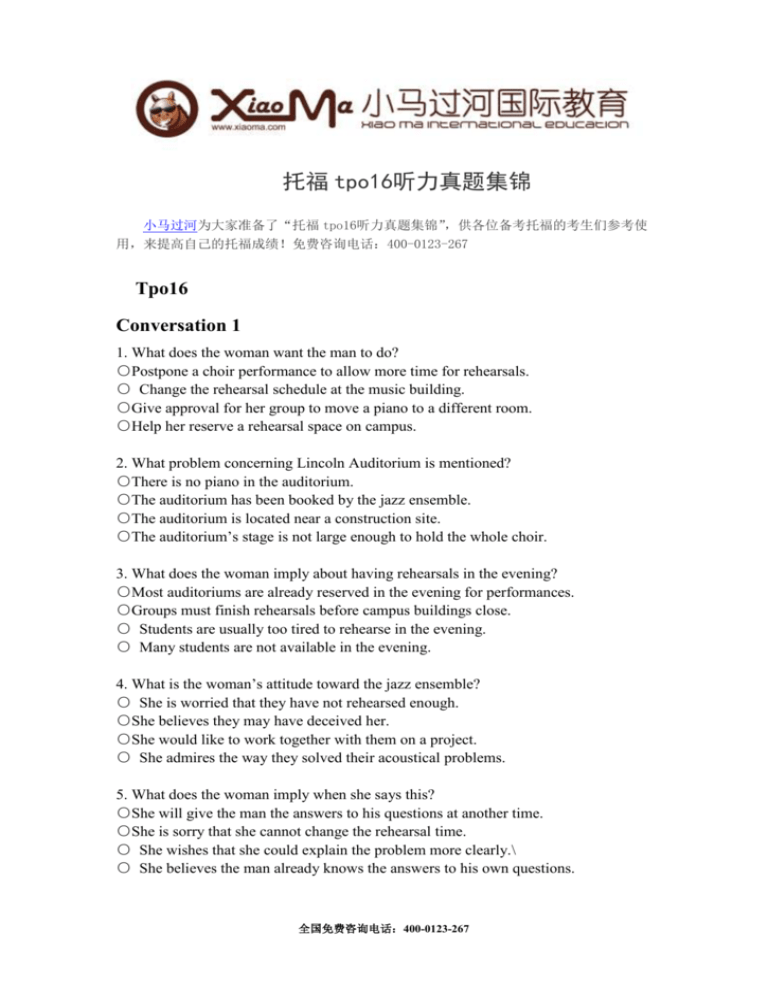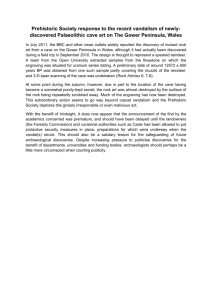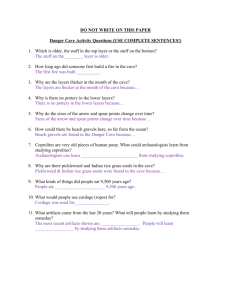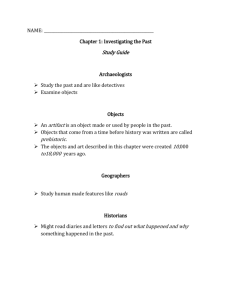2013年1月12日托福写作真题回忆
advertisement

托福 tpo16听力真题集锦 小马过河为大家准备了“托福 tpo16听力真题集锦” ,供各位备考托福的考生们参考使 用,来提高自己的托福成绩!免费咨询电话:400-0123-267 Tpo16 Conversation 1 1. What does the woman want the man to do? ○Postpone a choir performance to allow more time for rehearsals. ○ Change the rehearsal schedule at the music building. ○Give approval for her group to move a piano to a different room. ○Help her reserve a rehearsal space on campus. 2. What problem concerning Lincoln Auditorium is mentioned? ○There is no piano in the auditorium. ○The auditorium has been booked by the jazz ensemble. ○The auditorium is located near a construction site. ○The auditorium’s stage is not large enough to hold the whole choir. 3. What does the woman imply about having rehearsals in the evening? ○Most auditoriums are already reserved in the evening for performances. ○Groups must finish rehearsals before campus buildings close. ○ Students are usually too tired to rehearse in the evening. ○ Many students are not available in the evening. 4. What is the woman’s attitude toward the jazz ensemble? ○ She is worried that they have not rehearsed enough. ○She believes they may have deceived her. ○She would like to work together with them on a project. ○ She admires the way they solved their acoustical problems. 5. What does the woman imply when she says this? ○She will give the man the answers to his questions at another time. ○She is sorry that she cannot change the rehearsal time. ○ She wishes that she could explain the problem more clearly.\ ○ She believes the man already knows the answers to his own questions. 全国免费咨询电话:400-0123-267 6. What is the main purpose of the lecture? ○To explain the various ways that sulfuric acid is involved in the formation of caves. ○ To describe caves and other geologic formations in U.S. national parks. ○ To use Lechuguilla Cave as an example of how most caves form. ○ To discuss the formation and characteristics of an unusual type of cave. 7. The professor mentions parts of the process involved in the formation of Lechuguilla Cave. Indicate which of the statements below describe part of the process. Click in the correct box for each phrase. YES NO Gypsum residue accumulated to form decorative structures Gas generated by bacteria reacted with gypsum deposits Hydrogen sulfide gas mixed with underground water Acid dissolved parts of the limestone Bacteria fed on underground oil Flowing surface water enlarged the cracks in the limestone 8. According to the professor, what substance found in surface water is important for the formation of typical limestone caves? ○Gypsum ○Oxygen ○ Carbonic acid ○ Sulfuric acid 9. What does the presence of gypsum in Lechuguilla Cave indicate? ○ The cave was not formed by flowing water. ○ The cave is no longer forming. ○ Bacteria are present in high concentrations inside the cave. ○ No type of acid was involved in the formation of the cave. 10. What can be inferred from the fact that Lechuguilla Cave is no longer forming? ○ The cave has stopped attracting visitors. ○ The cave no longer contains any limestone. ○ The air in the cave is safer to breathe now than it was in the past. 全国免费咨询电话:400-0123-267 ○ Gypsum deposits inside the cave are growing thicker. 11. What does the professor mean when he says this? ○Lechuguilla Cave is not completely absent of water. ○Lechuguilla Cave is not totally safe to explore. ○ Water long ago flowed through Lechuguilla Cave. ○ Scientists do not agree about how Lechuguilla Cave was formed. 12. What is the lecture mainly about? ○Professor pianists of the 18th and 19th centuries. ○ The influence of the piano on music and society. ○ A comparison of the piano and harpsichord. ○A comparison of musical styles before and after the invention of the piano. 13. What does the professor mention as influences on musical styles before the invention of the piano? ○The preferences of particular patrons ○ The low numbers of available instruments. ○ Increase in the number of music schools. ○Reductions in the costs of producing instruments. 14. Why does the professor describe how a piano works? O To explain why pianos are easy to play. O To explain why pianos are expensive to construct. O To explain why pianos are not classified as string instruments. O To explain why pianos do not require frequent tuning. 15. According to the professor, why did the piano become more popular than the harpsichord? ○Piano music was easier to compose than harpsichord music. ○ Piano music was better for accompanying the popular new dances of the 1700s. ○The piano had a more attractive size and shape than the harpsichord. ○The piano could express a wider range of emotions than the harpsichord. 16. Why does the professor discuss Clara Schumann? ○She influenced the design of the modern piano. ○She grew up in an environment that encouraged female musicians. ○Her musical talents were inherited from her parents. ○Her background and Robert Schumann’s background were similar. 全国免费咨询电话:400-0123-267 17. What does the professor imply when he says this? ○He will not write a term on the blackboard. ○The students do not have to take notes. ○ The situation was described in the reading. ○ The students can easily guess what he means. SECTION2 1. Why does the student go to see the professor? A. To find his grade on the midterm exam. B. To explain why he missed a class C. To get help writing an essay. D. To ask to take a test at a different time. 2. Why does the professor congratulate the student? O He received the highest grade on a recent test. O He recently won an award. O He was accepted into a history program in France. O He wrote an essay that was published in a magazine. 3. What will the student do this weekend? A. Take a trip with his medieval history class. B. Practice speaking French. C. Attend an awards ceremony. D. Write a paper about Montreal. 4. What are two of the criteria the professor will use to evaluate students’ essays? Click on 2 answers. A. How completely they describe the factual details of historical events. B. How successfully they defend their own opinions. C. How carefully they analyze ideas discussed in class. D. How much information from the textbook they include. 5. What does the professor imply when she says this? A. She has not yet seen the student’s paper. B. She will not hold class on Monday. C. She needs more time to grade the student’s exam. D. She wants to confirm her plans for a test. 6. What is the lecture mainly about? 全国免费咨询电话:400-0123-267 A. Different foraging strategies among animals. B. Methods beavers use to gather building materials. C. Decisions beavers make about where to live. D. Choices beavers face when foraging. 7. What differences between aspen trees and ash trees does the professor point out? A. Aspen trees are easier to transport. B. Aspen trees provide better wood for construction. C. Aspen trees provide less nutrition for beavers. D. Aspen trees have more overall value to beavers. 8. What does the professor identify as the two central issues involved in beavers’ behavior? Click on 2 answers. A. How far from home to forage. B. How to cope with competition. C. What size tree to cut down. D. What time of year material for construction is available. 9. What does the professor say about the cutting down of large trees? A. Beavers generally prefer cutting down large trees to small trees. B. Beavers generally do not travel long distances to cut down large trees. C. Beavers will not cut large trees of certain species. D. Beavers use large trees mainly for the purpose of building shelters. 10. According to the professor, why do beavers generally forage at night? A. Beavers are safe from predators if they forage at night. B. Foraging at night requires less energy than foraging in the daytime. C. Beavers stay with their offspring during the daytime. D. Beavers face less competition for food from other animals during the night. 11. Why does the professor say this? A. To explain her reasoning. B. To indicate why her belief was wrong. C. To give an example of a decision beavers make. D. To explain the reason beavers travel far for wood. 12. What is the lecture mainly about? A. The images in stained-glass windows. B. The history of stained-glass art. C. The importance of religious art during the Middle Ages. 全国免费咨询电话:400-0123-267 D. Techniques for making glass during the Middle Ages. 13. What are two points the professor makes about stained-glass windows made during the Middle Ages? Click on 2 answers. A. They typically were small size. B. The glass was colored during the glassmaking process. C. They were used mainly for churches. D. They had simple designs. 14. During the Middle Ages, what was one of the first steps that artists used in making a stained-glass window? A. They drew the design onto the top of a table. B. They created models of the design with lead strips. C. They drew an outline of the design directly onto a piece of glass. D. They painted the design on paper. 15. According to the professor, what are two ways in which stained-glass windows made in The sixteenth century differed from those made in earlier centuries? Click on 2 answers. A. The way the glass was colored. B. The role played by lead strips. C. The scenes that were depicted. D. The way glass pieces were cut. 16. What does the professor imply contributed to the popularity of Tiffany glass? A. The use of lead compounds to enhance its colors. B. The reuse of stained glass from old church windows. C. The invention of electric lighting. D. A new process for painting glass. 17. What does the professor imply when she says this? A. It is unfortunate that people in the 19th century destroyed old stained-glass windows. B. Stained-glass windows made in the 19th century are more beautiful than those made earlier. C. It was necessary for people in the 19th century to break stained-glass windows. D. Stained-glass windows made in the 19th century are more valuable today than windows in previous centuries. 来源于:小马过河 全国免费咨询电话:400-0123-267 小马过河资料下载频道,欢迎您来下载! 全国免费咨询电话:400-0123-267








